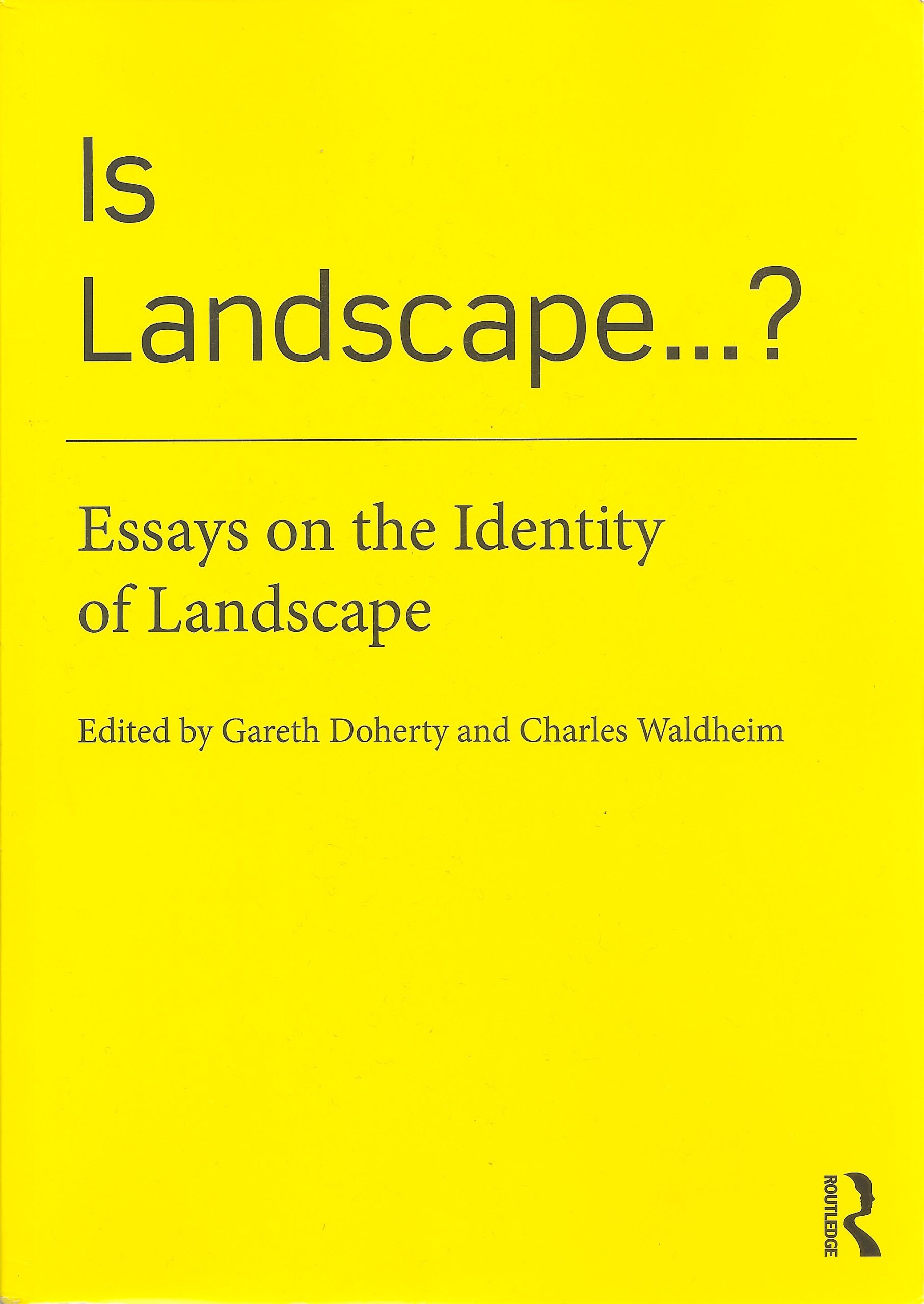Gareth Doherty and Charles Waldheim, Editors
Routledge

Exploring questions of landscape identity is an important and enduring topic for the field. As a multivalent term in both etymology and application, landscape often exerts an unsettling presence within the discipline and profession of landscape architecture. These dislocations are illuminated in the distinction between architectural conceptions of landscape and landscape architectural conceptions of landscape. Perhaps unintentionally, this divergence is expressed in the bookending of Is Landscape … ? with Mohsen Mostafavi’s foreword, and in closing, David Leatherbarrow’s reconsideration of Eckbo’s original question. Although both authors primarily define landscape in relation to architecture, landscape also routinely orchestrates both figure and ground, completely independent of architecture. While Mostafavi does appeal for an independent identity for the field, landscape—while not necessarily architectural—is, by its very essence, always relational to something else.
Between these architectural landscape bookends, a host of other landscape relations emerge. As is to be expected of an edited volume of authors diverse in both discipline and prominence, responses to the given questions vary widely in scope and engagement. Authors who assiduously filter their arguments through the given question offset those who only briefly return to the question as a form of circular conclusion. In these instances, the rhetorical mechanism appears to restrict and reduce, rather than to open up definitions of landscape. Nonetheless, when read as a “thickened” whole, a useful overlapping patchwork of fragments on landscape does emerge through the book. Either explicitly stated by the authors or as an impression, each chapter arrives at the following conclusions:
Is landscape literature? Potentially, since each can inform or adopt the other. Is landscape painting? Yes, since landscape and representation are inseparable. Is landscape photography? Yes, both are strongly interwoven. Is landscape gardening? No, but both are diminished by decoupling. Is landscape ecology? It is a complicated relationship. Is landscape planning? Yes, landscape is the medium and result of planning. Is landscape urbanism? According to the evidence, yes. Is landscape infrastructure? Yes, and politically so. Is landscape technology? They are entwined through making. Is landscape history? Landscape has a history and is a history. Is landscape theory? Yes, but this leads to more intriguing questions. Is landscape philosophy? Both are inextricably linked. Is landscape life? Landscapes are for life. Is landscape architecture? Both are topographic arts.
If, as the editors state, this process unpacks landscape’s (unquestionably cumbersome) baggage, how then should it be repacked? Which disciplinary luggage should be retained, reconfigured, supplemented, or discarded? Here, the book proffers more questions than answers: it opens up the cone of inquiry rather than narrowing it down; it reconnoiters the territory rather than crystallizing a nascent movement. For this reason, Is Landscape … ? is unlikely to achieve the impact of contemporary edited classics (with whom it shares some authors), such as Ecological Design and Planning (Wiley, 1997), Recovering Landscape (Princeton Architectural Press, 1999), and The Landscape Urbanism Reader (Princeton Architectural Press, 2006). Rather—as is embodied in the vivid safety yellow of the jacket—the book is best understood as a report on a work in development.
This is explicit in the sense that the editors aspire to ask further questions of landscape beyond the artificial constraint of seminar scheduling within an academic semester. It is also implicit if the core motivation of the book is taken to reside exactly midway through in Waldheim’s chapter, “Is Landscape Urbanism?” Given that this chapter draws from Waldheim’s current book, Landscape as Urbanism: A General Theory (Princeton University Press, 2016), we might best understand Is Landscape … ? as a reciprocal work. Whereas Landscape as Urbanism chronicles, codifies, reflects, and refines a catalytic design movement, Is Landscape … ? dispatches explorations across the terrain and down into the crevices of a thickened field of landscape.
The implications here are twofold. First, after almost two decades of evolution of a movement that has been enormously productive for the spatial arts—and landscape architecture in particular—the potency of landscape urbanism may have plateaued. Second, if landscape is reduced to serving as a prefix to urbanism, many other productive landscape associations are overshadowed. That is, rather than construing it as a problematic term ripe for jettisoning, landscape retains potency for further innovation and adaption of landscape architecture—in all of its forms.
How to Cite this Article: Kullmann, Karl. Review of Is Landscape…? Essays on the Identity of Landscape, by Gareth Doherty and Charles Waldheim, eds. JAE Online. August 11, 2016. https://jaeonline.org/issue-article/landscape-essays-identity-landscape/.






